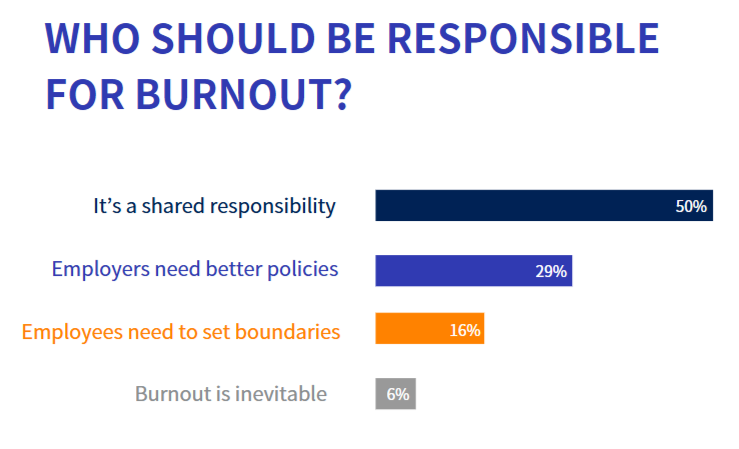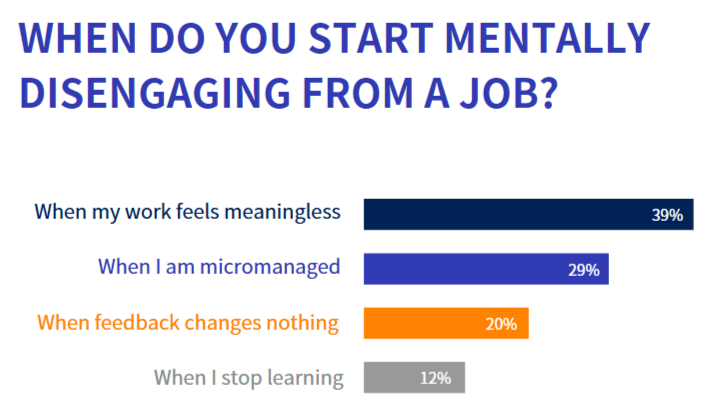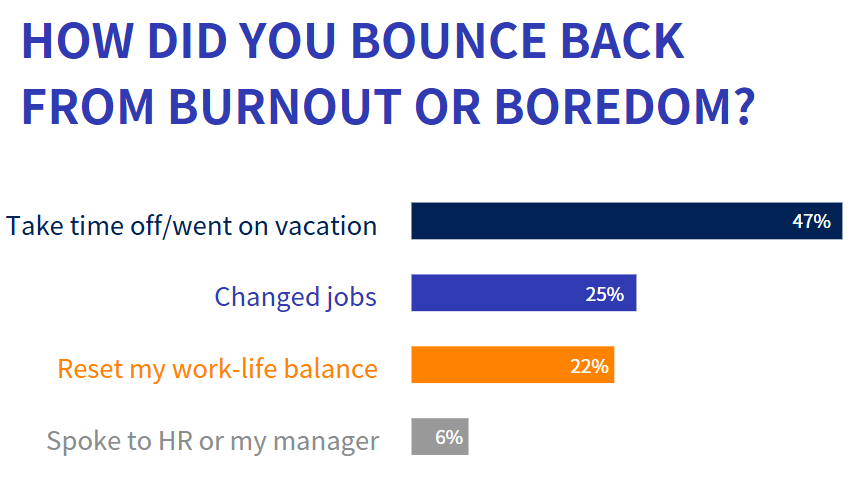Burnout does not always arrive in a blaze. Sometimes, it builds quietly through muted meetings, missed deadlines or a growing sense that the work just does not matter anymore. It is subtle. It is emotional. And by the time it becomes visible, it is often too late.
To explore how professionals experience and respond to disengagement, we conducted a survey. Nearly 1,000 people responded, offering a snapshot of where workplace wellbeing stands and where support often falls short.
Here is what we uncovered, and what organisations can do to respond more meaningfully.
1. Who’s Responsible for Burnout? Everyone but Not Equally
“Shared responsibility” sounds ideal, but in practice, it often leads to blurred lines. Without defined roles or action triggers, burnout prevention becomes a vague goal owned by everyone and executed by no one.
Most employers genuinely care about employee wellbeing. Many have already introduced wellness programs, Employee Assistance Programs (EAPs), or flexible policies. But when those efforts are not clearly communicated or regularly reinforced, they risk going unseen. | |  |
What organisations can do:
Define what shared responsibility actually looks like from both sides
Make existing policies more visible, accessible, and personalised
Equip managers to spot early warning signs, and know what to do next
2. Why Employees Disengage? Purpose Is the Missing Link
Disengagement does not begin with performance drops. It begins with emotional distance. What stood out most was not poor management or lack of growth, but loss of meaning.
Many organisations communicate purpose at the company level, but employees crave meaning at the role level. They want to see how their contribution matters, not just why the company exists. | |  |
What organisations can do:
Connect roles to outcomes and real-world impact during onboarding and performance reviews
Recognise contributions beyond KPIs, especially in cross-functional or behind-the-scenes work
Turn feedback loops into action cycles: if you ask, show what changes
3. How Do Employees Recover from Burnout? Mostly, They Exit
This paints a clear picture: recovery tends to happen outside the organisation, not within it. Whether through resignation or rest, people often opt for escape over engagement.
It is not always about lack of resources; it is often about lack of trust. When internal support systems feel formal, distant, or reactive, employees turn elsewhere. | |  |
What organisations can do:
Normalise “reset conversations” before it becomes a performance issue
Make support feel human, not procedural, accessible through informal channels, not just HR forms
Encourage managers to check in not just on goals, but on energy and emotional signals
The Bigger Picture: What These Polls Reveal
Each poll highlights a different challenge – burnout, disengagement, recovery. But together they reveal a deeper truth:
Disengagement often begins in silence, when purpose fades, feedback stalls, or support feels out of reach.
It is not always about a lack of motivation. More often, it is a lack of connection. People want to contribute but when their work feels unseen, they slowly start to check out. Many organisations are making real efforts to improve wellbeing and engagement. But the real challenge often lies between what is offered and what is felt.
What Employers Can Start Doing
Solving burnout and disengagement does not mean overhauling your culture overnight. It starts with small, intentional shifts.
✔ Clarify ownership: Show what shared responsibility really means and how it is supported.
✔ Localise purpose: Make sure employees see how their work connects to something bigger.
✔ Make feedback visible: Show how listening leads to action.
✔ Equip managers: Not with more meetings, but with better questions.
✔ Reframe recovery: Rest should not require resignation.
Final Thought: Listening is a Strategy
Disengagement does not always shout. Sometimes it whispers. The question is whether we are tuned in early enough to hear it, and whether our systems are built to respond when we do.
At JAC Group, we help organisations do more than hire. We help them understand what today’s professionals expect, and how to retain them through purposeful roles, inclusive leadership, and sustainable team culture. Whether you are rethinking engagement strategies or looking to build stronger teams from the start, our consultants can help you find the right talent and keep them thriving.

